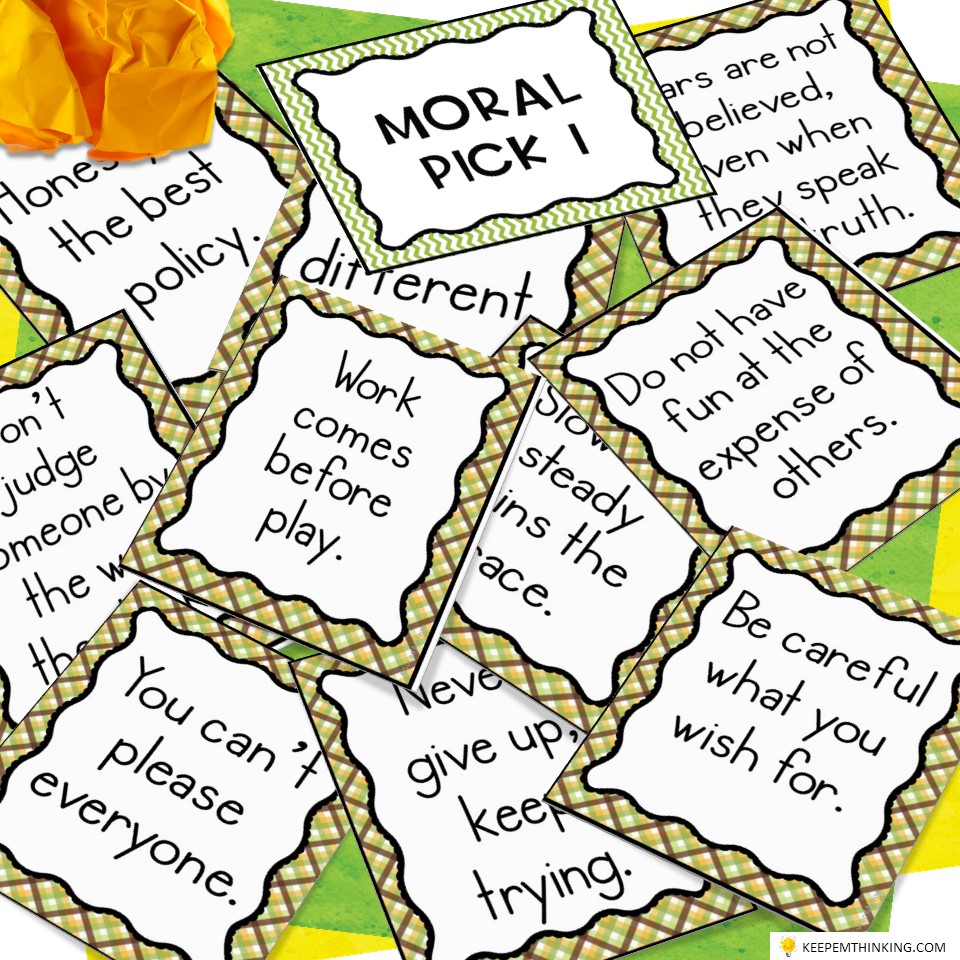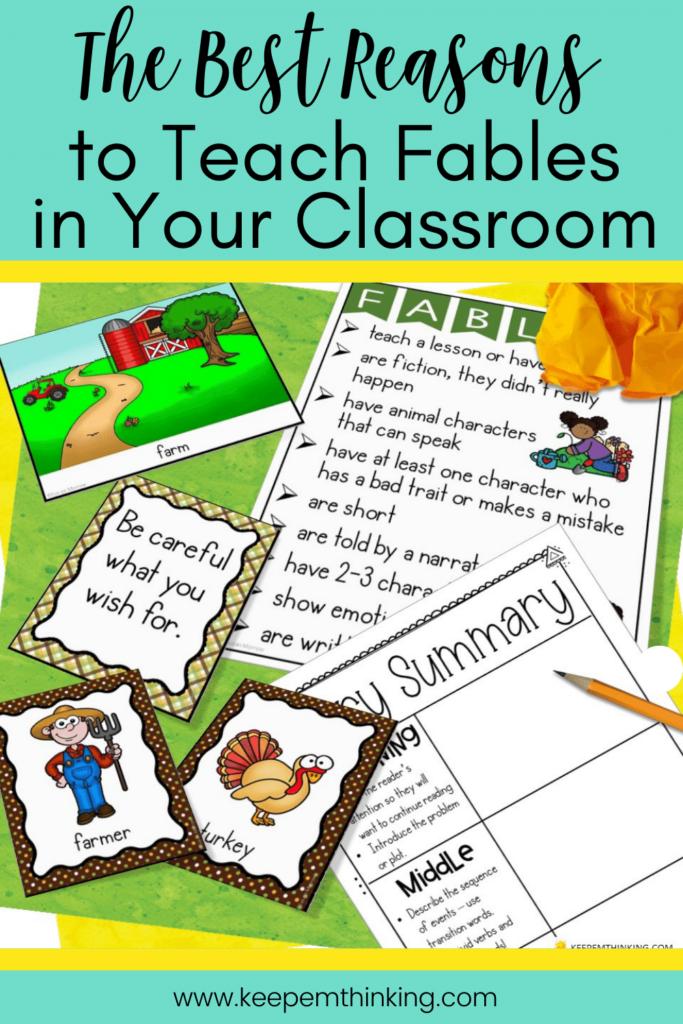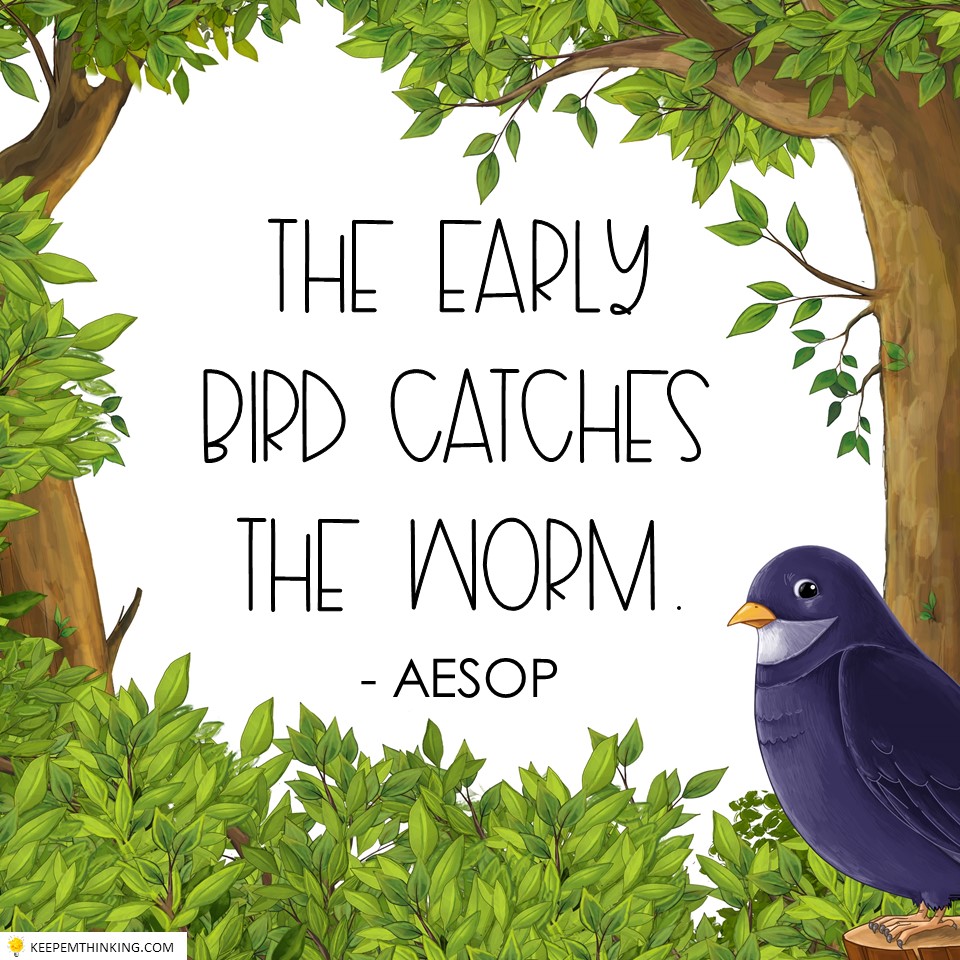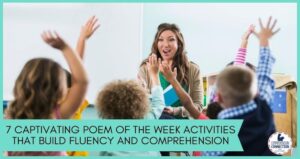Once upon a time, teachers discovered the power of fables in their classrooms. But as technology advanced and children’s books began to grace every shelf, this long-time tradition started to die out, and the reasons to teach fables were lost. They were replaced with YouTube videos and catchy rhyming pages that delighted the students. However, something was missing. Students began to lose touch with important life lessons, they struggled to get through longer texts, and mastery of story elements was all but a dream. Until one teacher rediscovered the power of the fable and brought it back into the classroom. And that teacher was you!

Did you see what I did there? No better way to start an article on the importance of teaching fables, than by starting with one! Though it may not be as bleak as my short story seems, the truth is that fables are not as readily taught as they used to be. I’m here to show you that there are so many important reasons to teach fables and bring a little tradition back into your classroom!
Reasons to Teach Fables: Emphasis on Social Emotional Learning
With such a push to focus on social-emotional learning and of course its importance in the health and well-being of our students, fables can be the answer. Don’t stress about planning separate activities when fables have everything you need!

The basis of all fables is to teach a lesson. This makes them a great resource for teaching kindness, cooperative learning, getting along with others, and so much more! Simply pick a fable that has a moral, such as kindness, that you want to work on with your students.
Could you use a stash of fables for your classroom? Check out my free resources!
Read the story together, and as you read relate the elements of the story to your students’ lives. Bring up relevant situations where the same lesson applies. Maybe it is something you notice happening in the classroom, at recess, or in the lunchroom. Just make it concrete and relatable. This will help students draw connections between the story and their life. From here, you can do any number of activities to reinforce the concept and use the fable as your springboard!
The power of using fables for social-emotional learning is that students will be so engaged in the text that they will be more open to doing this important work. They truly are magic!
Reasons to Teach Fables: Shorter Texts
It is indeed important for our students to experience longer texts, but when the story is longer it can be more difficult for your students to learn from.
Have you ever heard this: “I don’t want to read anymore!” OR “I don’t want to write anymore!” My guess is that you have. Reading and writing fatigue with our young students is very real.
Reading longer texts requires a lot of processing. First students are decoding and then trying to comprehend. Same with writing. First, they have to come up with the ideas, put them on paper, remember spellings, grammar, etc. Phew! Those processes are bound to wipe out any young learner.
Fables are the answer to being able to provide quality reading and writing instruction without so much burnout. Since fables by nature are shorter, kids don’t have to struggle reading and writing so much when working with the genre. Making this perhaps one of the most important reasons to teach fables.
The more engaged we can keep our young learners, the more likely we are to see concept retention. Plus, we want to make sure that reading and writing become joyful activities for them!
Save some time and grab some free Aesop’s Fables Activities in the Free Resource Library. They are ready to download and use in your classroom.
Reasons to Teach Fables: Easily Teach Story Elements

Easily teaching story elements is perhaps my favorite reason to teach fables. Again, since the text is shorter, your students can more easily trace a story element all the way through versus a novel. Hence, why I love using fables when I begin teaching story elements.
I find my students are much more successful at summarizing, identifying character traits, and theme when the text is short. Plus, in order to teach the lesson, fables usually exaggerate character details or come right out and name character traits. They usually give focus on one situation to teach the lesson, so the theme is more apparent. Truly, the setup of fables is the perfect scaffolding for teaching all story elements!
Taking Fables to the Next Level
So you’ve read a variety of fables (make sure to grab the free fables activity from the Free Resource Library) and you’ve worked on identifying the story elements and morals. Now what? Well, it’s time to take fables to the next level!

Have students apply what they have learned about fables to write their own fable. This Write a Fable Activity will have even your most reluctant writers motivated to get that pencil to paper!
This jam-packed resource has everything you need to guide your students in writing their own fable.
Planning & Drafting
Students will start by choosing cards that will identify their characters, setting, problem, and moral. This provides them with a basis on which to start writing.
Using the included planning pages and graphic organizers, students are then guided through outlining a summary of their fable. This planning makes writing the fable easier and helps students to remain focused.
Editing
During the editing stage, students are challenged to work on word choice. Students are guided through thinking of high-quality words that connect to each of the five senses. The included word posters also provide a variety of word choice options for verbs and transition words.
Before moving to the final writing, students can use the included fable checklist to make sure they have included everything they need. This checklist includes the elements of a fable as well as good writing goals.
Finalizing
Finally, students will prepare their final fable! The students love writing on the “special” paper that is included in this resource. I also love to have my students illustrate their fable. They love having them displayed together or sharing them during our author’s share time.
Find everything you need to complete this fable writing activity in your classroom in my store. It’s a wonderful culminating activity to any fable unit or a great way to teach a different writing genre.

Save these Tips and Ideas for Teaching Fables
Pin this to your favorite classroom Pinterest board so you can come back when you are ready to take teaching fables to the next level in your classroom.







